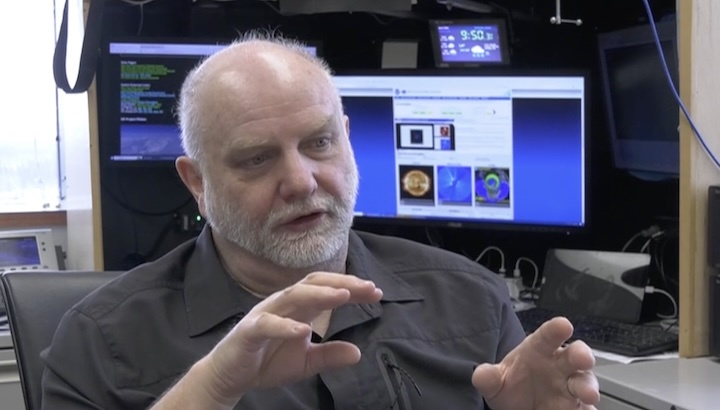10.04.2025

FAIRBANKS, Alaska (KTUU/KTVF) - A series of three rockets were launched from Poker Flat Research Range at the end of March, with a mission to enhance our understanding of how aurora interacts with the atmosphere.
The project, called AWESOME — Auroral Waves Excited by Substorm Onset Magnetic Events — was led by Mark Conde with the Geophysical Institute at the University of Alaska Fairbanks.
According to Conde, aurora in the atmosphere “stirs up” elements that normally sit at certain relative elevations.
This movement, he said, “has consequences for the ionosphere, for communication, navigation, radar, those sorts of things.”
The mission of the three rockets was to gather data about how this is happening, whether through “convective upwelling, like you would get from a camp stove or a candle flame,” or through waves generated by the aurora in the atmosphere.
“The question is, ‘do those waves play a role in mixing the atmosphere?’ Is the mixing caused just by uplifting the whole atmosphere, or is it caused by wave mixing and overturning?” Conde said.
The first two rockets launched on March 25, while the third took off on March 29. By getting measurements about each phenomenon, the mission is intended to help determine what roles the two play.
To do so required ground observation from graduate students at six sites across Interior and northern Alaska, from Eagle to Utqiagvik, and including Poker Flat itself.
Conde expects analysis of the results to take several months.
“It’s a lengthy process. There’s a lot of images. We have to, you know, you have to identify the tracer clouds in the images. You have to watch them move, and it’s a very labor-intensive, manual process to analyze those images,” he said.
The knowledge gained from this analysis can help people understand how reliable the modeling and prediction of these atmospheric composition changes can be, according to Conde, with wave mixing more predictable than vertical motion.
These composition changes can affect planning for spacecraft orbits, for example.
“Spacecraft operators have to worry many, many, many times a week about whether their spacecraft is going to encounter a piece of tracked debris that’s going to come close, and they need to make a decision as to whether an avoidance maneuver is required or not,” Conde said.
“You would prefer not to spend propellant and fuel performing an avoidance maneuver that really isn’t necessary, so if you can improve the ability to forecast exactly how close that approach distance will be, that lets you better determine when to use your precious resource of propellant to make an avoidance maneuver,” he added.
Results from these studies could make those calculations more predictable, not just in northern latitudes but across the globe.
Conde estimated that around 60 to 70 people were involved in the project, including about 15 on the science team and another 50 or so from NASA, including personnel and contractors.
Quelle: KTUU
